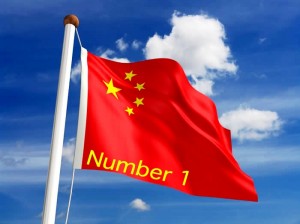Sales of passenger vehicles in China  are expected to increase from 8.7 million units in 2009 to 13.55 million units in 2015. This increase in sales of passenger cars, SUVs and minivans of more than 55% does not include the sale of millions of light commercial vehicles annually.
If the forecast by J.D. Power and Associates holds true, China will easily remain the world’s largest auto market during the decade to come.
Last year China surpassed the U.S. as the world’s largest auto market as a result of targeted government incentives and aggressive bank lending, which lasted all year, while U.S. politicians wrangled for six months over what was a short lived but effect Cash for Clunkers program.
Worse, U.S. banks stopped lending to consumers, even as taxpayers poured billions of dollars into them. Most U.S. market forecasts see it languishing in the 12-13 million unit range for the next five years. (See Chinese Auto Market Grows to 40 Million Annually? )
Automakers have recorded substantial profits during  the past few years in China, whose industrial policy requires joint ventures and substantial investment  by western automakers. Moreover, the Communist party controls the hiring in joint venture plants, thereby ensuring the loyalty of workers.
It is the stated policy of the Chinese government to consolidate the auto sector around Chinese companies, while diminishing the role of western automakers’ once they have learned all they can from them.
Thus far the clearest evidence of the plan is state owned SAIC taking 51% controlling interest of Shanghai GM late last year by forcing a cash-starved GM to sell 1% if its 50% share. (See SAIC Takes Controlling Interest of GM Joint Venture)
“China’s rapid growth makes the automotive market highly attractive and almost irresistible to any automaker,†said John Humphrey, senior vice president of global automotive operations for J.D. Power and Associates. “However, for many brands, achieving their profit aspirations in China in the coming years will be far more challenging.â€
There are numerous market and structural obstacles that automakers must overcome in China, including:
- Hyper-competition in the China market. By 2015, there will be more than 90 automotive brands competing in China’s passenger-vehicle market, more than any other market in the world and more than twice the number of brands in the United States. In addition, by 2015, there will be more than 300 models produced in China, and hundreds more models will be imported on a limited basis.
- Consolidation? Despite the proliferation of brands, rival provincial governments are competing to defend their regional automotive industries (including suppliers) to drive local employment and tax revenues. Power says this will result in a competitive landscape that will be little changed by 2015. This overlooks actions by the Central Government, though.
- The lack of consolidation, as well as proliferation of product, will have adverse impacts on prices and profit margins.
Power maintains that offshore automakers will still hold an advantage by 2015 in the areas of engineering, manufacturing and quality, but the gap with domestic automakers will be closing. Chinese automakers will more aggressively assert themselves in their relationships with their joint venture partners, especially in the areas of product strategy, distribution and marketing.
Among the 13.55 million passenger vehicles that are projected to be sold in China in 2015, approximately 57% will be sold in the lower-margin subcompact and compact car segments. Within these two segments alone, there will be more than 125 vehicle models competing for consumers.
For comparison, only 22% of passenger vehicles forecasted to be sold in the United States in 2015 are expected to be subcompact and compact models, while 57% of passenger vehicle sales are expected to be higher-margin luxury car, SUV, pickup and minivan models.
Total factory production capacity for passenger vehicles in China is expected to reach 19.6 million units by 2015, although the rate of capacity utilization is projected to be only 66%.
“The low rate of capacity utilization projected for 2015 will likely cause another dilemma for automakers in China, as factories typically need to achieve at least 80% utilization to cover the high amount of fixed costs,†said Humphrey. “As a result, automakers will be forced to look for ways to alleviate the financial stress these loss-producing operations cause, including options of consolidating, increasing exports, and investing in more efficient flexible manufacturing technologies.â€
There are more than 13,000 vehicle dealerships currently operating in China. Approximately one-third of dealers report that they are operating either at a financial break-even point or at a loss. Most of these dealers depend on profits from new-vehicle sales to remain in business. Because new-vehicle prices will continue to come under increased pressure, there will be greater attrition of marginally performing retail outlets.


Thank you for this great post, I learned something that I haven’t figured out in the 15 years I’ve been shipping cars. Car Shipping is my website, maybe you can learn some stuff from me too!